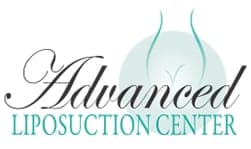
Unless you’ve been living under a rock for the past year or two, you’ve probably been introduced to the term microblading. While you might not know exactly what it is, you likely have heard the word. Microblading is a semi-permanent process that mixes art and medicine to give patients the long-lasting illusion of naturally fuller, darker, more defined brows. Unlike traditional tattoos, this technique uses individually crafted, fine abrasion lines to introduce pigments to the first two layers of skin.
The technique’s popularity practically exploded in the West overnight. It’s quick rise in prominence is primarily due to the amazing results and positive feedback that reviewers have left online. Many websites that host reviews and research on various cosmetic procedures had to quickly create space on their sites for microblading as its own separate topic due to the sharp rise of interest in the procedure.
While microblading may be the current king of the hill, it certainly did not come out of nowhere nor is it the final word in permanent makeup. The general idea of microblading, in fact, has been around in one form or another for decades.
While tracing the birth of permanent body art in general is impossible. Tattoos have been found on mummified remains in Europe from around the 24th century BC (however, the practice itself is likely much older). Whether from scaring or pigments, permanent body art has a long and varied history of use across the globe. In the western world, tattoos started popping up on women during the 19th century.
While their popularity has waxed and waned, tattoos themselves were really only used in the West for body art. It wasn’t until the 1980’s that tattoos began to be used for facial cosmetic purposes. It was at this time that doctors came across the idea while searching for ways to help their patients cope with hair loss. Once such medical condition is called alopecia. In alopecia the immune system decides to attack the body’s own hair follicles causing full-body hair loss. Wigs could be used to cover hair loss on the scalp however alopecia sufferers also frequently lose hair in other places, including the face.
For women, the loss of natural looking eyebrows can be a big concern. It takes a lot of time and skill to draw on a full set of natural looking brows everyday. Not to mention that the need to constantly maintain them throughout the day is a major pain. Is it any wonder that women seek more permanent ways to make their brows look their best?
Cosmetic tattoos began to be seen as the obvious answer. Medical providers started to brand the procedure with more professional sounding names — like “permanent makeup” and “micropigmentation.” The technique proved useful not just for alopecia sufferers either. It started being used with patients who were losing the strength or ability to hold makeup brushes and make steady brushstrokes. Permanent makeup offered sufferers of arthritis or Parkinson’s disease the ability to maintain control over how they look while avoiding added time and frustration. The end result; the ability to take control over their bodies and that part of their sense of self back from their illness. As it grew in popularity, it was only a matter of time before any woman who wished to save time on their makeup routine could get in on permanent makeup.
How should one prepare for a microblading appointment?
Preparing for a microblading appointment is essential to ensure the best results and a smooth healing process. Here are some guidelines to follow:
- Research the Artist: Choose a reputable and experienced microblading artist with positive reviews and a portfolio of their work. Verify their certifications and licenses.
- Avoid Blood-Thinning Substances: For about a week before the appointment, avoid alcohol, aspirin, ibuprofen, and fish oil supplements. These substances can increase bleeding and affect the pigment absorption.
- Consultation: Have a thorough consultation with the artist to discuss your expectations, desired eyebrow shape, and any concerns you might have.
- Avoid Sun Exposure: Refrain from sunbathing and tanning for at least a week before the procedure. Sunburned or irritated skin cannot be microbladed.
- Avoid Waxing or Plucking: Do not wax or pluck your eyebrows for at least two weeks before the appointment. The artist will shape your eyebrows during the microblading session.
- Avoid Chemical Peels: Refrain from chemical peels, microdermabrasion, or laser treatments on your face for a few weeks before the appointment.
- Inform About Medical Conditions: Inform the microblading artist about any medical conditions, allergies, or medications you are taking. This information can be crucial for your safety and the success of the procedure.
How long does microblading typically last before a touch-up is needed?
Microblading typically lasts between 12 to 18 months before a touch-up or a color boost is needed. However, the exact duration can vary based on individual factors such as skin type, lifestyle, and aftercare. Oily skin tends to break down the pigment faster, requiring more frequent touch-ups, while drier skin types might retain the color longer. Regular touch-ups help maintain the desired eyebrow shape and color intensity. It’s essential to follow the aftercare instructions provided by the microblading artist to prolong the results.

